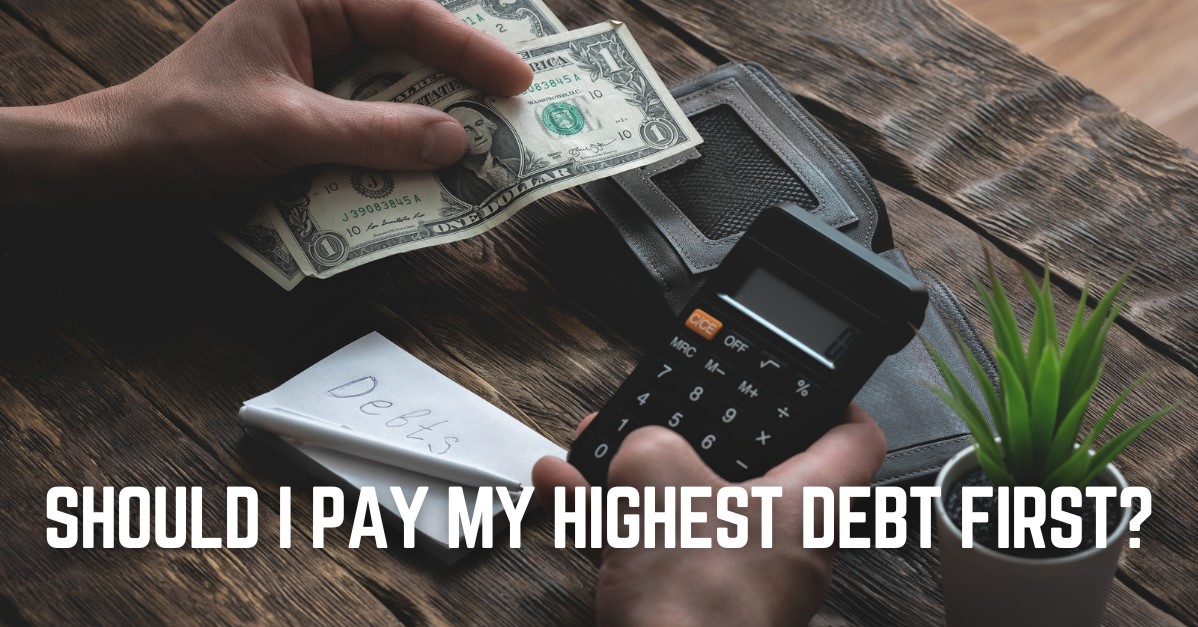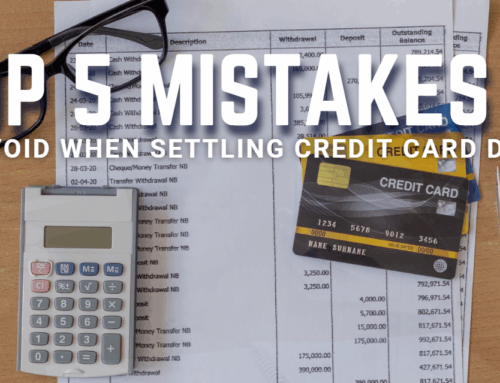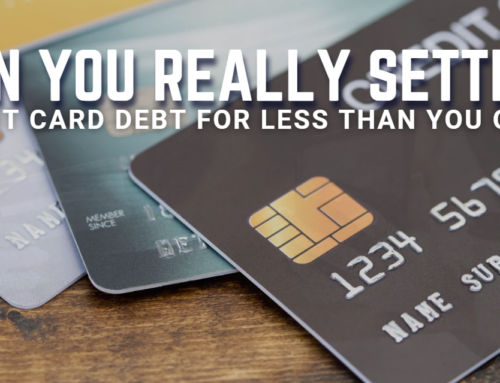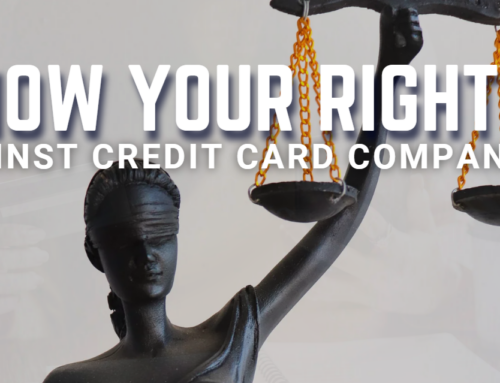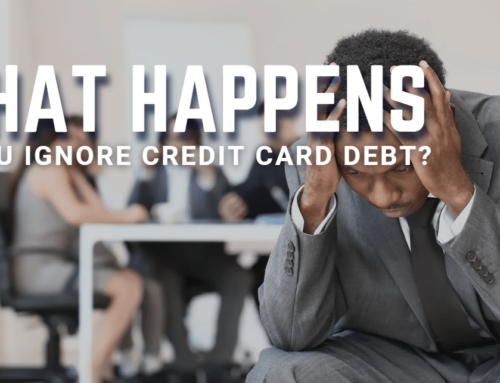Debt can be a heavy burden that many of us carry in various forms – from credit card balances to student loans and mortgages. The weight of debt can make financial decisions feel overwhelming, leading to questions about how best to approach repayment. One common dilemma that individuals facing debt grapple with is whether to prioritize paying off the highest debt first. It’s a decision that can have a significant impact on your financial future, and in this blog, we’ll dive into the pros and cons of this approach.
Whether you’re striving for financial freedom or seeking to regain control over your finances, understanding the nuances of debt repayment strategies is a crucial step on your journey to financial stability. So, should you tackle your highest debt first? Let’s explore the factors that will help you make an informed choice.
The Art of Debt Prioritization
Debt can often be a financial albatross, a weight that hangs heavily on our shoulders. Whether it’s credit card balances, student loans, mortgages, or other forms of debt, the path to financial freedom can seem daunting.
One of the critical questions that those in debt often grapple with is where to start – should you tackle the highest debt first or adopt a different strategy? The answer isn’t one-size-fits-all, as it depends on several factors. To guide you through this financial maze, we’ll explore the concept of categorizing your debts into ‘zones’ and discuss how to decide which debts to prioritize.
The Priority of Debt Repayment: A Strategic Approach
When it comes to managing your debts, it’s crucial to adopt a strategic approach to prioritize what to pay off first. Debts can be categorized based on their impact on your finances, and this classification can help you make informed decisions about which ones to address first.
- The Essential Debt: Tackling High-Interest Obligations
In this category, we find the debts that demand immediate attention due to their potential harm to your financial well-being. These obligations often come with high-interest rates, which means that they accumulate rapidly, increasing the overall cost if not addressed promptly. Examples of such debts include credit card balances, personal loans, and certain private student loans. For instance, credit card interest rates can soar as high as 30%, and some even compound daily, making it imperative to tackle them to avoid a financial nightmare.
- Balancing Act: Considering Interest Rates and Long-Term Implications
This category comprises debts that involve a more nuanced decision-making process. They typically have lower interest rates, come with longer-term repayment commitments, and may offer certain tax advantages. Examples include home equity lines of credit, federal student loans, and auto loans. Many individuals choose to maintain these debts instead of paying them off entirely because of the potential tax benefits they offer. When determining how to prioritize these debts, it’s essential to weigh the interplay between interest rates, tax deductions, and your long-term financial goals.
- Investing in Your Financial Future: Managing Low-Interest, Long-Term Debts
In this category, you’ll find debts with the longest terms and the lowest interest rates. They are often associated with investments in your financial future. Examples include mortgages, with interest rates as low as 2%, and certain business loans. Although these debts may not demand immediate attention like high-interest obligations, they play a crucial role in building assets and should be managed in alignment with your overall financial strategy and goals.
Designing Your Debt-Payoff Plan
- Option 1: Pay off the highest-interest debt first
Pros: This strategy allows you to minimize the overall interest you pay, saving you money in the long run. It also frees up your financial resources for other goals, as high-interest debts can be a significant drain on your budget.
Cons: If your highest-interest debt is also your largest one, it may take some time to pay down, potentially leading to feelings of discouragement. People with substantial debt loads might find this approach challenging.
- Option 2: Pay off the smallest debt first
Pros: Known as the debt snowball method, this approach provides a psychological boost. Paying off small debts quickly creates a sense of accomplishment, which can motivate you to continue your debt reduction efforts.
Cons: On the downside, it may take longer to become entirely debt-free, and you might end up paying more in interest over time. This method prioritizes emotional motivation over financial efficiency.
- Option 3: Pay debts that most affect your credit score
Pros: This strategy focuses on improving your credit score, potentially opening doors to lower interest rates and better financial opportunities. Maintaining a healthy credit score is crucial for securing loans, mortgages, and other forms of credit.
Cons: To boost your credit score, you may need to make lifestyle changes, such as cutting back on spending or altering your financial habits. This can be challenging and might affect your motivation.
- Option 4: Use a balanced method
Pros: A balanced approach provides flexibility and the ability to tailor your debt repayment plan to your specific circumstances. It allows you to adapt to unexpected expenses without derailing your overall goal.
Cons: Without a clearly defined strategy, you might struggle to stay motivated. It requires self-discipline and consistent financial management.
- Option 5: Debt settlement
Pros: Debt settlement can lead to lower interest rates, simplified finances, and a faster path to debt freedom. It often involves negotiating with creditors to reduce the total amount you owe, which can result in significant savings.
Cons: There might be upfront costs associated with debt settlement, and there’s no guarantee that you will qualify for this option. It could also impact your credit score.
Each of these strategies has its merits, and the right choice for you depends on your unique financial situation, goals, and personal preferences. It’s crucial to carefully assess your circumstances and consult with financial experts if needed to determine the most suitable debt repayment plan. You may also consider blending elements from different strategies to create a customized approach that aligns with your specific needs and priorities.
Navigating Your Path to Debt Freedom
Selecting the right debt repayment strategy is a crucial step on your journey to financial freedom. Each approach has its own advantages and drawbacks, and the choice hinges on your unique financial situation, goals, and motivation style. Whether you prefer tackling high-interest debt, boosting motivation by starting with smaller debts, or focusing on improving your credit score, staying committed is key.
If you find yourself facing financial hardship or overwhelming debt, exploring debt settlement may be a viable option. Mediator Law Group is here to address any questions or concerns you have about debt settlement. This approach can lead to lower interest rates, simplified finances, and a faster path to financial independence.
Your path to financial stability is a personal one. Evaluate your financial situation, set clear objectives, and choose the strategy that best suits your needs. With dedication and professional guidance when required, you can take control of your financial future and pave the way to a debt-free life. For questions about debt settlement or assistance with your debt challenges, don’t hesitate to reach out to Mediator Law Group. Your journey to financial freedom is within reach.

